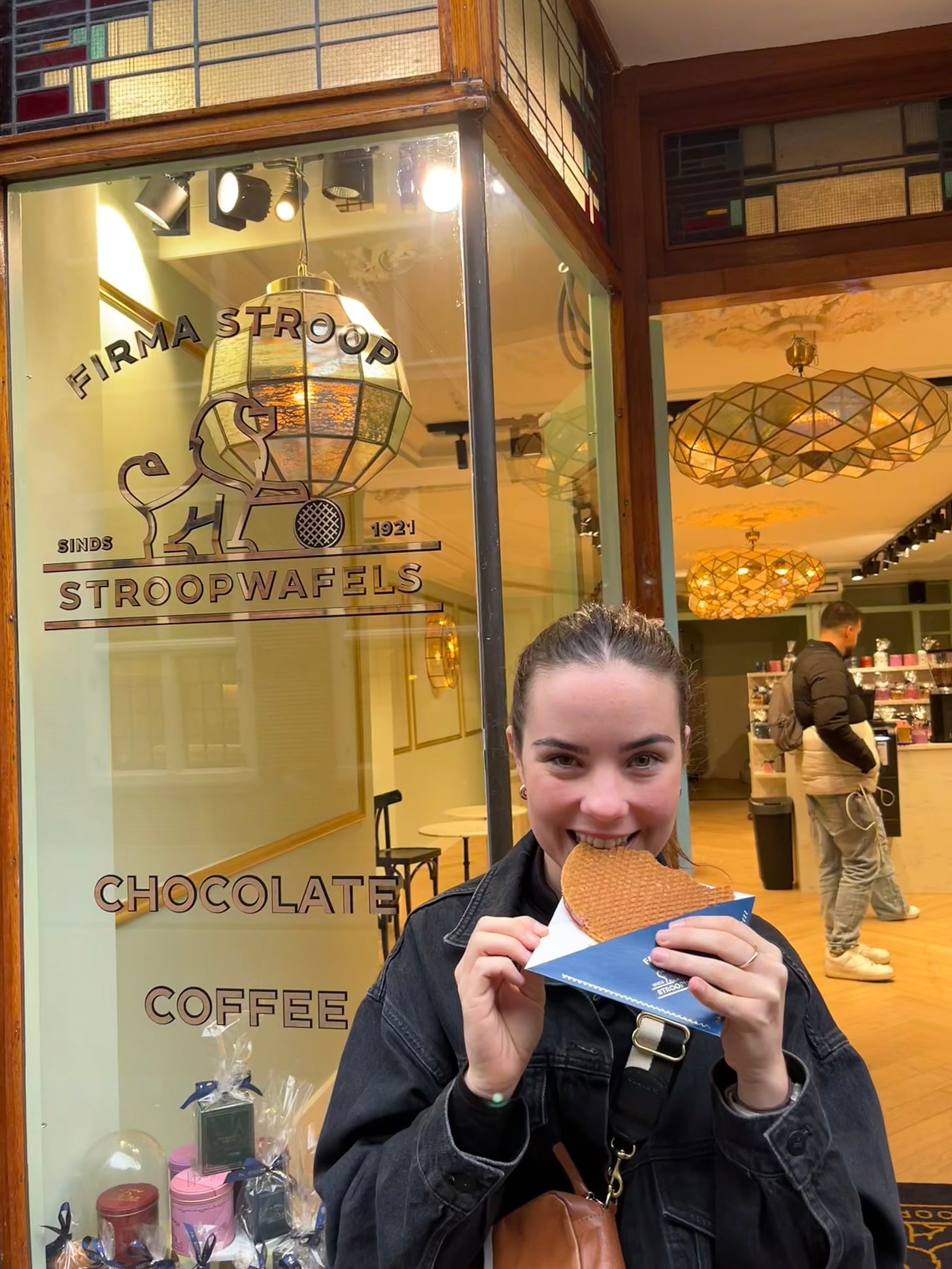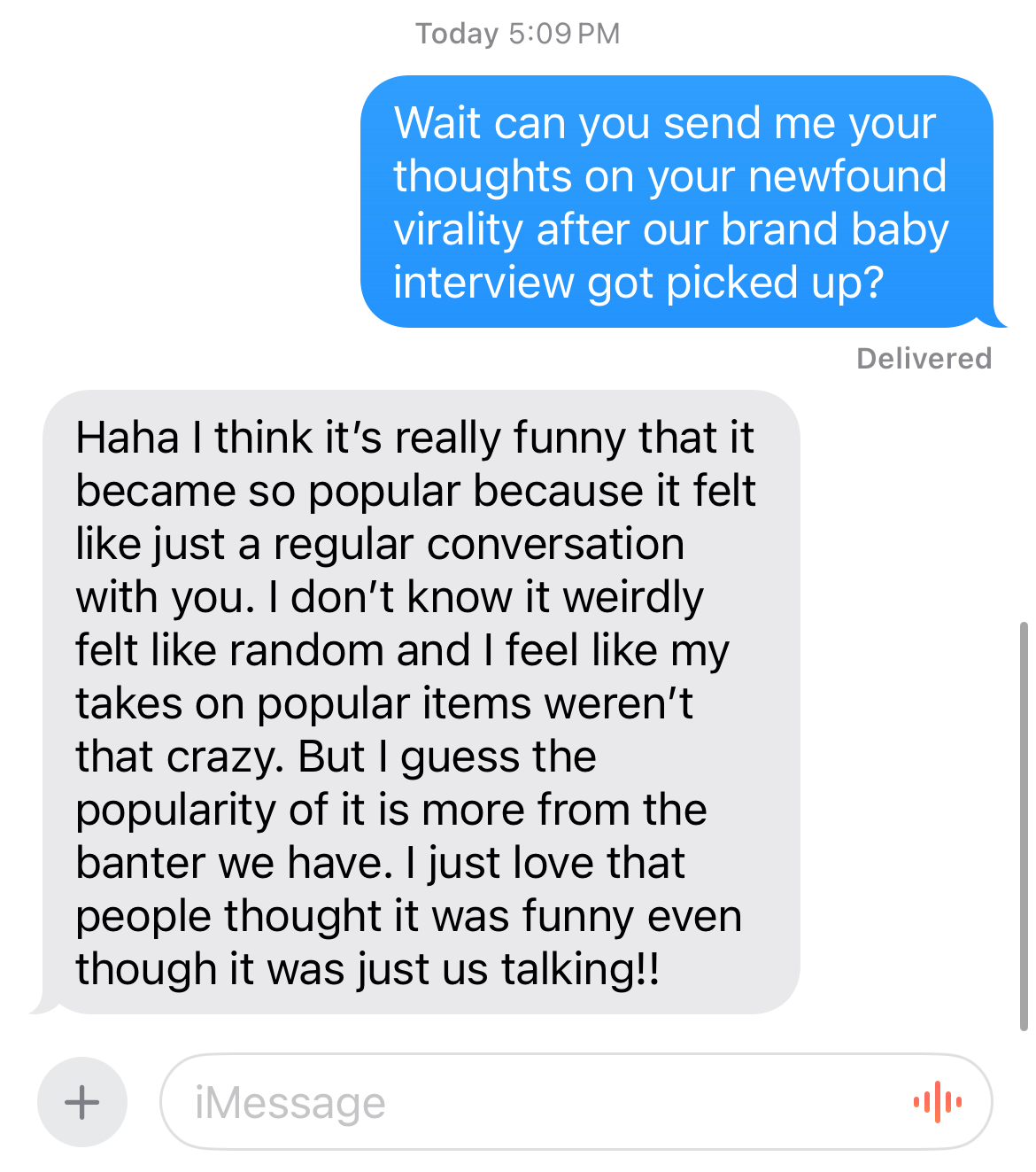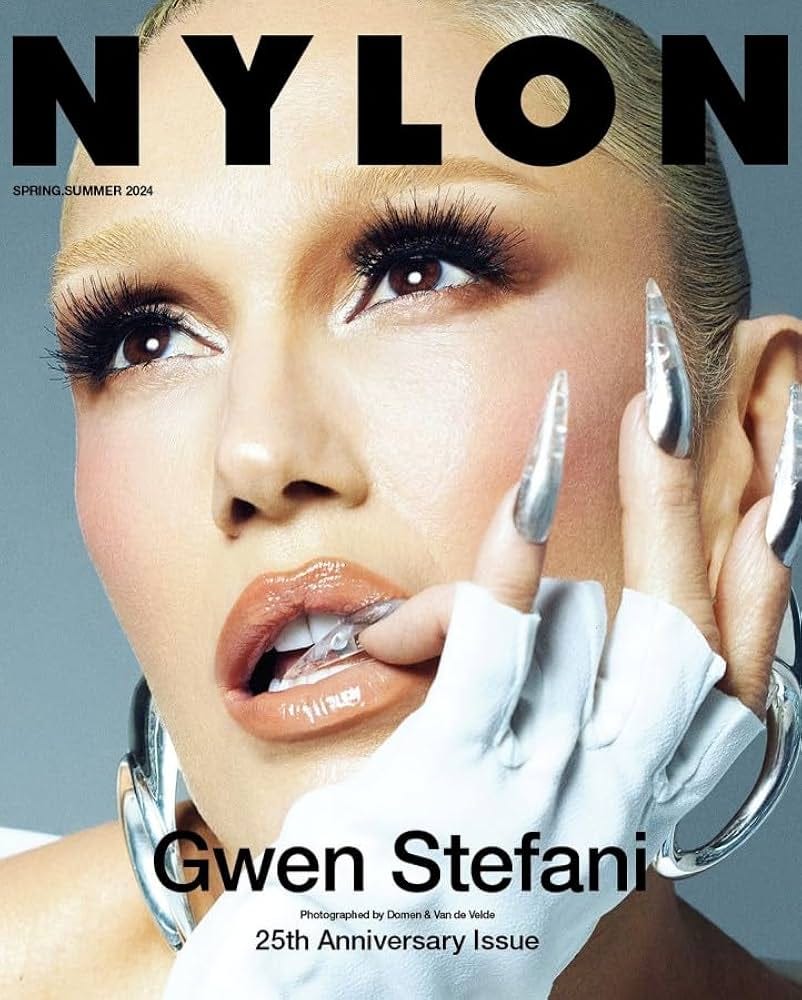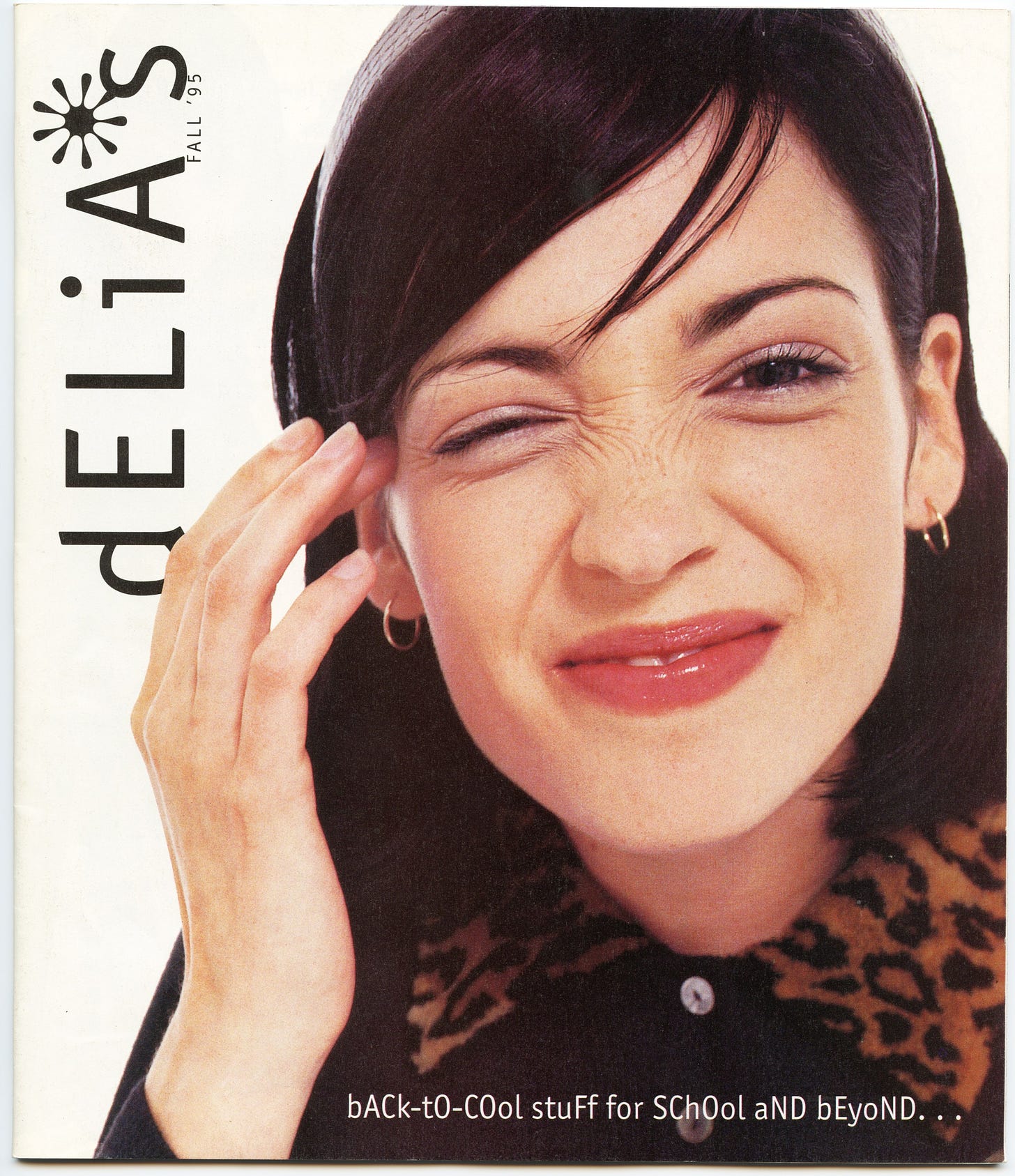Issue #35: Bring dELiA*s back
All about the resurgence of print magazines, and how it relates to the rise of Substack as a media platform.
Hello everyone! I hope your October is off to a great start. I took a little hiatus last week. Work has been busy, and I’m currently in Amsterdam (for fun), so I needed to take last week off.
Despite my hiatus, I received quite a few new subscribers over the past week thanks to
’ shout-out in Saturday’s Substack Reads. Welcome, new friends! If you don’t know what you signed up for, my name is Caroline and I’m a 25 year-old marketing manager living in New York City. I write about brand trends and case studies from a Gen Z perspective, and I also love interviewing founders and leaders in the brand space. I try to publish Brand Baby every week, and usually on Thursdays, but sometimes I switch it up (like this week). I hope you like it here :)If you missed the Substack Reads post, you can check out all of Casey’s amazing recommendations here. Casey recommended my interview from last month with my sister, Gemma, about trends and back-to-school shopping. I asked Gem what she thought about her newfound virality:
And I promise, more Gemma content coming soon…
The State of Print Magazines
This week, I’m chatting about the resurgence of print magazines, and how it relates to the rise of Substack as a media platform. Let’s get into it, shall we?
It’s not exactly breaking news that print magazines are back. It seems like just about everyone covered J.Crew’s relaunch of its catalog last month, and just a few weeks ago, Vice Media announced the relaunch of its print magazine for paying subscribers. I’m seeing the resurgence of print magazines primarily among brands in two industries:
Fashion: We’re seeing the revival of early 2000s-era print catalogs from J.Crew and Old Navy, sometimes as one-time editions to celebrate an anniversary, like in Old Navy’s case. In J.Crew’s case, their new mag feels way more editorialized than a traditional catalog. There’s even an interview with cover star Demi Moore about her J.Crew vintage collection.
Media: Media brands like Vice and Nylon are bringing back the print medium for long-form essays and highly curated imagery. Vice’s magazine will be available as a direct-to-consumer product for paying subscribers, and its first release will be a photography issue featuring the work of 20 up-and-coming photographers from across the world.
So why is print coming back?
I’ve talked about nostalgia as a key pillar of Gen Z trends before, but nostalgia is obviously central to the comeback of print magazines. Print magazines are very emblematic of the 90s and early 2000s, when you went to the grocery store and begged your mom to buy you a copy of Seventeen Magazine or Teen Vogue. Or maybe you came home from school to a pile of catalogs from Delia’s (or should I say, dELiA*s?) on your kitchen counter.
As I’ve written about before, this nostalgia goes beyond the desire to be flipping through a magazine – it’s also a nostalgia for a way of living. I view print magazines as a sort of symbol of the life of an early 2000s rom-com character, like Jenna Rink in 13 Going on 30 or Andie Anderson in How to Lose a Guy in 10 Days. Jenna and Andie held glamorous jobs at magazines in big cities. Now, Gen Z experiences a nostalgia for that type of life: working in a city, going into an office, girl bossing! Let me know if this is a little far-fetched, but perhaps Gen Z’s nostalgia for a lifestyle akin to a rom-com, where the main character seemed to work at a magazine more often than not, is aligned with the resurgence of the print magazine itself.
Okay, but then there’s something else contributing to the resurgence of print. It’s Gen Z’s disillusionment and exhaustion with digital forms of media, and specifically social media. Even though we’re still highly active on social media, there’s a strong desire to turn it off and partake in physical forms of media instead. There’s joy in flipping through something that you can pick up and touch.
There’s also much more intentionality in print forms of media, both on the consumer side and on the publisher side. Consumers have to engage in a purchase or a deliberate action rather than swipe through an endless feed to consume content. Publishers have to curate text and imagery under the strict limitations of page counts. The content within print magazines is finite and intentional. For a generation fed up with an overwhelming amount of content on social media, an old-school medium containing meaningful content is highly appealing.
So how does this relate to Substack?
The trend towards print reminds me of a similar parallel happening in the shift from social media to Substack. Lately, I’ve been seeing more and more influencers and OG bloggers shift towards prioritizing content creation on Substack. Some of my favorite bloggers-turned-influencers, like
of Cupcakes and Cashmere and of Cup of Jo have launched thriving Substack newsletters in the past year or so.These writers once ran successful blogs on dot com, then pivoted to social channels over the past ~5-10 years, and now they’re bringing their content to Substack. And influencers may have massive followings on social media, but more and more are investing in content on Substack. So why are they now prioritizing this newsletter platform?
Substack fosters a direct and controlled channel to reach audiences. Unlike social media where content can be pushed out to anyone, creators typically have more control over who sees their content on Substack, and that content is being delivered directly to inboxes. BTW, I do work at an email marketing company, but this isn’t sponsored.
Those audiences tend to be highly engaged. They want to be subscribed! Audiences are probably smaller than follower counts on social media, but they’re often more engaged and more specific.
The content on Substack tends to be long-form and editorial in nature. For a lot of influencers and bloggers, long-form content is where they started and what they love to do. It allows writers to expound upon their thoughts and create thoughtful content.
So, yeah, a lot of parallels between the types of content, the delivery of that content, and the engagement of audiences that we see both on Substack and from magazines! Whether it’s Substack or print, there’s definitely a desire to return to long-form editorial content, where creators can deliver intentional content directly to engaged audiences.
What do you think? Do you see parallels between the resurgence of print magazines and the growth of Substack?
Housekeeping 🧹
I spoke to Fortune for an article about the production and popularity of hats as merch for both of the presidential candidates this year. You can check it out here.
Okay, last thing! I’m rapidly approaching 1,000 subscribers?!! That number may seem small to some, but it’s a huge milestone for me. I started this publication in December of 2023 with a goal of hitting 1,000 subscribers by the end of 2024, and it looks like I’m going to do it! I’m thinking of throwing a little get-together in New York City in November to celebrate. If you live in the NYC area and would be interested in attending, let me know here:
See you next week! xx












Love this! I publish a print magazine about honesty in creative industries, and our last issue’s topic was nostalgia haha - very relatable! Love your read ❤️ 1000subscribers soon is a huge milestone, imagine them all in one room!
She’s growiiinnnng 🌟🌟🌟